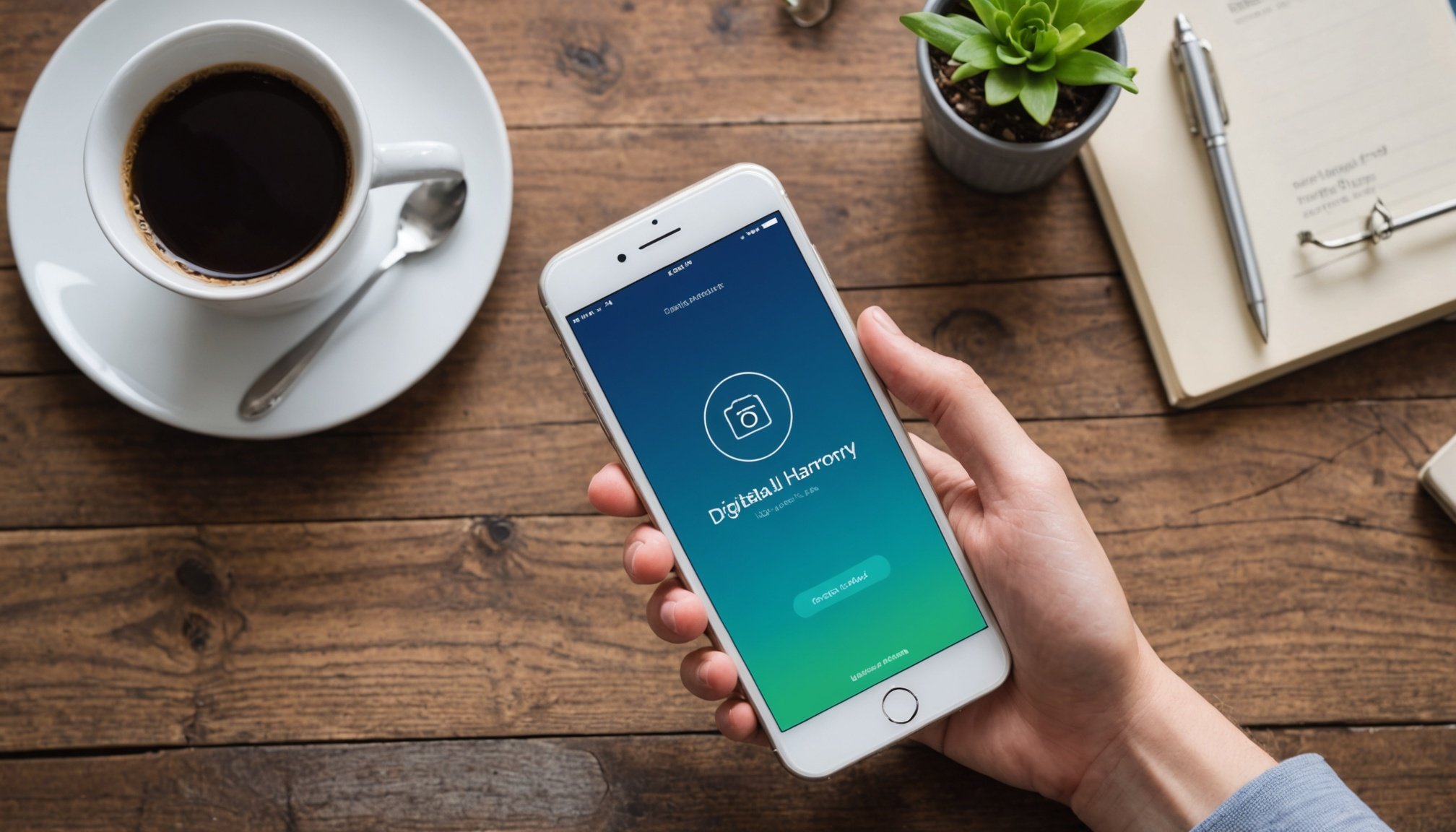Understanding Work-Life Balance
Achieving an effective work-life balance is crucial in today’s digital age. It refers to the fine equilibrium between professional responsibilities and personal time, ensuring neither dominates. The significance of maintaining such a balance cannot be understated, as it fosters both mental and physical well-being, enhancing productivity and overall happiness.
However, the role of technology, especially smartphones, presents new challenges. These devices keep us constantly connected to work, blurring the boundaries between office hours and personal time. This is where digital wellness comes into play, focusing on managing the use of technology to maintain a healthier lifestyle.
Additional reading : Empowering smart homes: top techniques for harnessing smartphones to enhance energy efficiency
One of the primary hurdles in preserving work-life balance is the temptation to check emails and messages outside of work hours. This not only intrudes on personal time but also increases stress levels. Identifying these challenges is the first step toward establishing clear boundaries.
To achieve better smartphone management, consider setting specific time slots for checking work-related communications. Enabling “Do Not Disturb” can also be an effective tool in delineating work life from personal downtime. Balancing these aspects allows individuals to be more present in each sphere, thus promoting a sustainable lifestyle.
This might interest you : Maximize your smart home”s energy efficiency: innovative smartphone strategies for monitoring hvac consumption
Strategies for Using Smartphones Effectively
Harnessing the power of smartphones to enhance productivity requires thoughtful strategies. Employing time management apps and digital tools can help streamline your daily tasks and avoid digital overload.
Time Management Apps
Time management apps like Todoist, Trello, and RescueTime are highly effective for keeping you on track. These apps offer features such as task scheduling, progress tracking, and notifications. Key features to consider when choosing an app include customizability, integration with other digital tools, and user-friendly interfaces. You can personalize app settings by adjusting notification preferences and categorizing tasks by priority to ensure efficiency.
Setting Boundaries
Establishing clear digital boundaries aids in maintaining focus. Techniques such as enabling “Do Not Disturb” settings can silence notifications during crucial work hours. Additionally, creating tech-free zones in your home or workspace encourages more meaningful interactions and less dependency on screens.
Scheduling Screen Time
To maintain a balanced digital life, utilize online calendars and reminders for structuring both work and leisure time. Scheduling downtime is crucial to prevent burnout and encourage relaxation. Embrace techniques for mindful smartphone usage by disconnecting at specific times of the day and engaging in activities free from screen distractions. These strategies can significantly enhance productivity and well-being.
Digital Wellness Tips
Achieving digital wellness is essential in today’s technology-driven world. Understanding the impact of excessive smartphone use can be the first step toward ensuring mindful technology use. Overuse of devices can disrupt sleep, increase stress, and strain personal relationships, creating imbalances in your work-life harmony.
A solution to consider is incorporating digital detoxes into your routine. These breaks from technology can have several benefits, such as improving focus, reducing screen fatigue, and enhancing mental clarity. By allowing some distance from constant notifications and screens, you’ll find more time to engage in activities that promote relaxation and rejuvenation.
Practices for cultivating mindfulness with technology are also valuable. Start by setting boundaries, such as designated screen-free times, particularly before bed. Use apps that track and limit screen time to encourage healthier usage patterns. Additionally, focus on quality over quantity—ensure that the time spent on digital platforms is enriching and purposeful.
Digital wellness is within reach by making conscious choices. Embrace mindful technology usage to create a balanced lifestyle, achieve work-life harmony, and enhance your well-being. With these strategies, achieving a healthy relationship with technology becomes a practical and beneficial goal.
Recommended Apps for Work-Life Balance
In today’s fast-paced world, maintaining a balance between work and personal life can be challenging. Apps that enhance productivity and promote wellness can be incredible allies. Let’s dive into some productivity tools and wellness apps that cater to various lifestyle needs.
Productivity Tools
Selecting the best apps for balance is crucial for boosting productivity. Apps like Todoist and Trello help organize tasks efficiently, allowing you to focus on priorities. When choosing a tool, consider compatibility with your current workflow. Integration with calendars or email clients can streamline daily tasks further.
Wellness and Meditation Apps
Wellness apps like Headspace and Calm offer guided meditations and mindfulness exercises, enhancing mental health. Selecting the right app depends on your lifestyle and personal preferences. Apps offering flexibility in session lengths or topics can make integrating meditation into your routine smoother. The benefits of such practices include reduced stress and improved concentration.
Social and Leisure Apps
Balancing work with leisure is vital for a healthy lifestyle. Social apps like Meetup foster connections through shared interests, while leisure apps like Pocket provide enriching content during downtime. Formulating strategies for app use can ensure they enhance relaxation rather than detract from it. This balance between connectivity and leisure enriches both personal and professional life.
Integrating Smartphone Use into a Balanced Lifestyle
Navigating the intricate dance between smartphone integration and a balanced lifestyle requires intentional effort and awareness. Developing healthy digital habits is key. One effective strategy is limiting screen time by setting daily usage goals. This can prevent over-reliance on devices and ensure more time for personal interactions and offline activities.
Creating a balanced technology routine involves establishing designated times for smartphone use. For instance, reserving specific hours in the morning and evening for checking emails and social media helps reduce mindless scrolling. This allows for dedicated periods of focus or relaxation without distractions.
Successful integration strategies often incorporate tech-free zones. For example, keeping the dining room or bedroom free from devices encourages face-to-face connections and restful sleep. Similarly, setting notifications to ‘Do Not Disturb’ during family or work discussions aids in maintaining a balance.
It’s crucial to evaluate and adjust these habits from time to time. By consciously assessing how and when technology is used, individuals can better align usage with their values and priorities. This mindful approach enhances the quality of life and relationships in today’s digital era.
Overcoming Challenges in Achieving Digital Harmony
Navigating the digital world presents notable challenges. Identifying and addressing these common obstacles is crucial for achieving balance.
Identifying Common Obstacles
Distractions and procrastination are frequent hurdles. With notifications constantly pinging, it’s easy to become sidetracked. Social media, while a great connector, can contribute significantly to procrastination by drawing attention away from important tasks. Furthermore, constant connectivity can lead to stress and burnout, hindering overall productivity and digital harmony.
Solutions to Common Challenges
To overcome digital challenges, practical solutions are essential. Consider eliminating distractions by setting specific times for checking notifications, thus reducing interruptions. Strategies like the Pomodoro Technique can help in prioritizing tasks efficiently by breaking work into focused intervals. Recommendations for managing social media use include setting time limits and using apps that block certain platforms during work hours, fostering a more intentional use of technology.
Building a Support System
Accountability plays a pivotal role in achieving digital balance. Engaging with supportive communities or groups can provide motivation and strategies that work. Encourage family and friends to partake in digital wellness efforts, creating an environment that promotes digital harmony. This collective approach not only helps in overcoming personal obstacles but also fosters a supportive culture.










